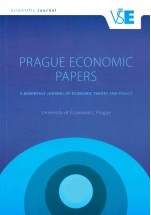An assessment of the effec tiveness of sterilization of central bank interventions: empirical evidence from India
An assessment of the effec tiveness of sterilization of central bank interventions: empirical evidence from India
Author(s): Abdul Rishad, Sanjeev Gupta, Akhil SharmaSubject(s): Economy, Financial Markets
Published by: Vysoká škola ekonomická v Praze
Keywords: Sterilization; central bank intervention; money supply; RBI; two-stage least;
Summary/Abstract: The active participation of the central bank in exchange rate management has accelerated the growth of foreign exchange reserve in India. The massive reserve stockpiling has substantially contributed to apprehensions about excess liquidity in the domestic economy. The extent to which these concerns are justified depends on the degree to which the central bank is able to mitigate its effects on monetary aggregates. This study is an attempt to assess the magnitude of the sterilization coefficient by using quarterly data from 1996 to 2019. In order to estimate sterilization and offset coefficients, the study employed the two-stage least squares (2SLS) method under the theoretical framework of simultaneous equation modelling. The findings show that the reserve accumulation through central bank interventions puts pressure on money supply. However, the RBI sterilization policy was effective as the central bank was able to sterilize 93 percent of its interventions, while the offset coefficient was 72 percent during the period of study. The low value of the offset coefficient compared to the sterilization coefficient indicates a high degree of monetary policy independence in neutralizing the central bank’s purchase interventions. Based on the findings, it can be recommended that policymakers should consider the sustainability of interventions and sterilization operations as the dual policy objectives of independent exchange rate management and monetary policy cannot be achieved in the presence of a high interest rate in an inflation-targeting regime.
Journal: Prague Economic Papers
- Issue Year: 31/2022
- Issue No: 5
- Page Range: 417-440
- Page Count: 24
- Language: English

